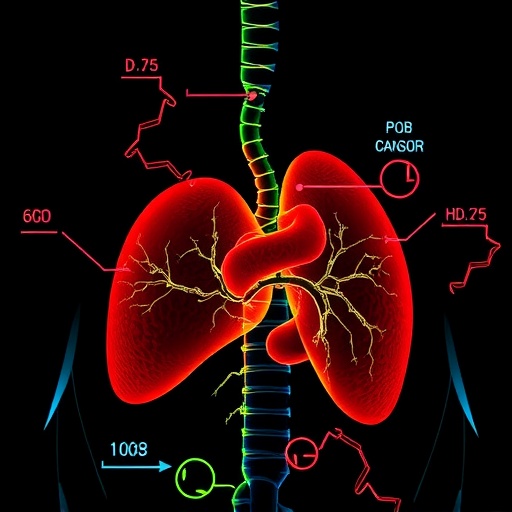A study from Vanderbilt researchers has found that enhanced treatment support can help smokers who have more difficulty quitting because they are fast metabolizers of nicotine.

Credit: Vanderbilt University Medical Center
A study from Vanderbilt researchers has found that enhanced treatment support can help smokers who have more difficulty quitting because they are fast metabolizers of nicotine.
The study published in Nicotine & Tobacco Research is the latest finding from the Vanderbilt Center for Tobacco, Addiction and Lifestyle (ViTAL) that supports a personalized medicine approach to smoking cessation. Researchers previously determined that fast metabolizers benefit more from varenicline — a medication that mimics the pleasant effects of nicotine on the brain — than nicotine replacement therapy, such as the patch and gum. Despite this evidence, however, many smokers don’t use varenicline because of its cost and lingering negative perceptions, so the Vanderbilt researchers studied if nicotine replacement therapy could be delivered in a way that made it more effective for fast metabolizers.
The investigators found that providing fast metabolizers with enhanced treatment support doubled their odds of quitting and narrowed the abstinence disparity with slow metabolizers.
“Fast nicotine metabolizers are genetically predisposed to smoke more and have more trouble quitting. One would therefore think they would benefit from more intensive support for their quit attempts, but this hadn’t been studied,” said corresponding author, Scott S. Lee, MD, PhD, MPA, MPhil, assistant professor of Medicine at Vanderbilt University Medical Center (VUMC).
The researchers tested 321 smokers hospitalized at VUMC for the nicotine metabolite ratio, a validated biomarker that distinguishes fast nicotine metabolizers from slow metabolizers based on the ratio of two nicotine breakdown products, cotinine and 3-hydroxycotinine, in their blood. Fast metabolizers numbered 241, while slow metabolizers numbered 80. At hospital discharge, each group was randomized on a 50/50 basis to receive one of two smoking cessation interventions centered around nicotine replacement therapy: usual care or enhanced treatment support. Participants assigned to usual care were referred to the state quit line, which called participants after discharge to offer cessation counseling and a choice of free nicotine patches or lozenges by mail. In contrast, the enhanced intervention provided both patches and lozenges in-hand at discharge, as well as access to a VUMC-affiliated tobacco treatment counselor who could coach participants on the optimal use of nicotine replacement therapy and other aspects of quitting.
The results showed that providing enhanced treatment support to fast metabolizers narrowed the disparity in quit rates with slow metabolizers. In the usual care arm, 25% of slow metabolizers and 10% of fast metabolizers quit smoking 6 months after hospital discharge. Enhanced treatment support increased the latter proportion to 17%, thus cutting in half the abstinence gap between fast and slow metabolizers.
The study has several strengths, the authors noted. It is believed to be the first nicotine metabolite ratio-based study to take place among hospitalized patients and the first to experimentally examine whether fast and slow metabolizers respond differently to behavioral support for quitting smoking.
However, given that this was a subgroup analysis of a larger trial, they cautioned that the results should be considered exploratory until they are validated in a dedicated study.
“Treating smoking is poised to shift from a one-size-fits-all approach to one that’s tailored to each person’s genetics and other individual factors. This study suggests that coaching fast metabolizers on proper use of nicotine replacement therapy may offset the negative impact of fast nicotine metabolism on quitting,” said the study’s senior author, Hilary Tindle, MD, MPH, the William Anderson Spickard Jr., MD, Professor of Medicine, and associate professor of Medicine at VUMC. “Simple reminders from a health coach, such as combining a daily nicotine patch with short-acting lozenge use throughout the day, can make all the difference for successful quitting.”
The research received support from grants from the National Heart Lung and Blood Institute. Other Vanderbilt authors who contributed to the study included Matthew Freiberg, MD, MSc; Stephen King, BA; and Quinn Wells, MD, PharmD, MSCI, MSc.
Journal
Nicotine & Tobacco Research
DOI
10.1093/ntr/ntad079
Article Title
Can treatment support mitigate nicotine metabolism-based disparities in smoking abstinence? Secondary analysis of the Helping HAND 4 trial
Article Publication Date
20-May-2023




